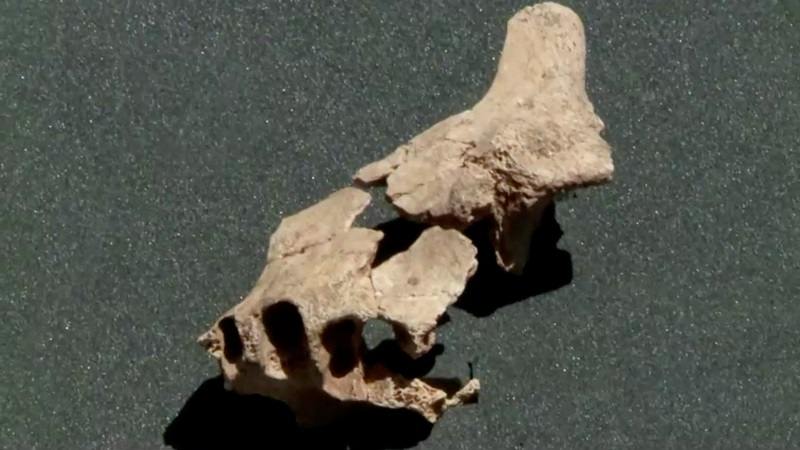Ancient jawbone could give glimpse of Europe’s earliest humans

A fossil of an ancient jawbone is seen in Burgos, Spain, in this screengrab taken from a handout video obtained July 8.
22:26 JST, August 3, 2022
MADRID (Reuters) — Archaeologists in Spain said July 8 they had dug up an ancient jawbone that could help them look into the face of some of the earliest human ancestors in Europe.
The surprise find, which could be about 1.4 million years old, could also give vital clues to the evolution of the human face over the millennia, the team from the Atapuerca Foundation said.
“The first week of July 2022 will enter the history of human evolution,” the team added in a statement.
The fossilized fragment of an upper jaw and cheekbone was found near caves in the Atapuerca Mountains in northern Spain’s Burgos Province, the site of other ancient remains.
The scientists said they were still working on identifying the specific kind of human ancestor and determining the bone’s age.
“We have to continue our research for about at least a year … This takes lots of time,” Jose Maria Bermudez de Castro, one of the team’s coordinators, told journalists.
“What we can say is that we have found a fossil that’s very important and interesting that belongs to one of the first populations that arrived in Europe.”




